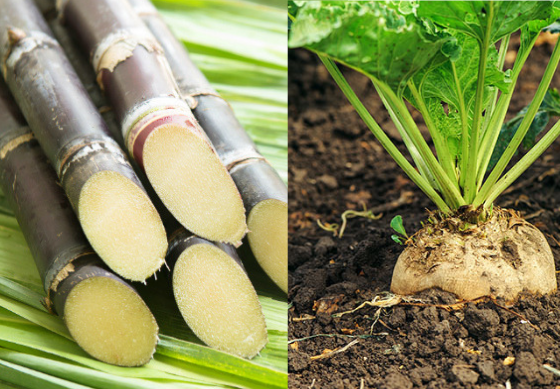Understanding beet sugar vs cane sugar helps shoppers make informed choices about their sugar preferences.
Understanding beet sugar vs cane sugar helps shoppers make informed choices about their sugar preferences.
Blog Article
Discover the Uses and Perks of Beet Sugar Vs Cane Sugar in Your Daily Diet
Checking out the distinctive high qualities of beet and cane sugar discloses more than simply their sweetening capabilities; it highlights their distinct effect on health and cooking arts. Beet sugar, recognized for its subtle taste, is often preferred in fragile desserts, whereas cane sugar, with its hint of molasses, includes splendor to robust meals. Each kind holds its very own nutritional profile and glycemic effects, inviting a deeper understanding of their functions in a well balanced diet and sustainable usage techniques.
Origin and Production Processes of Beet and Cane Sugar

The unique environments and dirt types required for expanding sugar beetroots and sugarcane add to differences in their cultivation methods and geographical circulation, affecting the economics and sustainability of their production. beet sugar vs cane sugar.
Nutritional Comparison In Between Beet Sugar and Cane Sugar
Regardless of stemming from various plants, beet sugar and cane sugar are nutritionally really comparable, both primarily including sucrose. Each offers regarding 4 calories per gram, converting to about 16 calories per tsp. Structurally, both sugars are made up of about 99.95% sucrose, with marginal quantities of various other materials like dampness and trace element, which do not considerably change their nutritional profiles.

Eventually, when selecting between beet sugar and cane sugar based on dietary material alone, both deal similar advantages and disadvantages as they are essentially forms of the same particle-- sucrose, supplying quick power without various other nutrients.
Effect On Health: Glycemic Index and Caloric Content
Checking out better right into the impacts of beet sugar and cane sugar on wellness, it is crucial to consider their glycemic index and caloric web content. The glycemic index (GI) of both beet and cane sugar is around 65, categorizing them as high-GI foods, which can cause fast spikes in blood glucose levels.
Each kind of sugar consists of around 4 calories per gram, making their caloric content matching. For those keeping an eye on calorie intake, specifically when taking care of weight or metabolic health and wellness problems, comprehending this equivalence is vital (beet sugar vs cane sugar). Excessive intake of any high-calorie, high-GI food can contribute to health and wellness concerns such as weight problems, heart condition, and insulin resistance.
Environmental and Economic Considerations of Sugar Production
Beyond wellness impacts, the production of beet and cane sugar additionally increases significant environmental and financial concerns. Sugar beet cultivation has a tendency to call for cooler environments and has a lower geographical footprint contrasted to sugar cane, which grows in tropical regions. Both plants are extensive in terms of water use and land occupation, potentially leading to deforestation and water shortage. Economically, the worldwide sugar market is extremely unpredictable, affected by adjustments in global profession plans and aids. Lots of countries incentivize sugar production with monetary support, skewing market value and impacting small-scale farmers negatively.
Furthermore, the use of chemicals and plant foods in both beet and cane sugar growing can lead to dirt degradation and pollution, more influencing biodiversity and neighborhood water bodies (beet sugar vs cane sugar). The selection between cultivating sugar beet or cane usually depends upon neighborhood ecological conditions and economic elements, making the sustainability of sugar production a complicated issue
Culinary Applications and Flavor Differences
While the ecological and you can try these out economic facets of sugar production are indeed substantial, the option in between beet and cane sugar additionally influences cooking applications and flavor profiles. Beet sugar, acquired from the sugar beet plant, is understood for its incredibly neutral preference.
Walking stick sugar, removed from sugarcane, Home Page often retains molasses traces, which present an unique splendor and depth. This slight molasses taste boosts the complexity of baked items, sauces, and marinates. It is specifically preferred in products where a sugar undertone is preferred, such as in brownies or gingerbread. The mild variation in wetness material in between beet and cane sugar can impact the texture and consistency of recipes, making cane sugar a favored selection for particular recipes that profit from its unique buildings. Read Full Article

Conclusion
To conclude, both beet and cane sugar have distinctive origins and production procedures, using comparable dietary accounts with mild distinctions in salt material and flavor. While their influence on health and wellness, especially relating to glycemic index and calories, is equivalent, the selection in between them frequently boils down to environmental, economic aspects, and particular cooking requirements. Recognizing these elements can direct consumers in making informed choices that straighten with their health and wellness goals and taste preferences.
Report this page